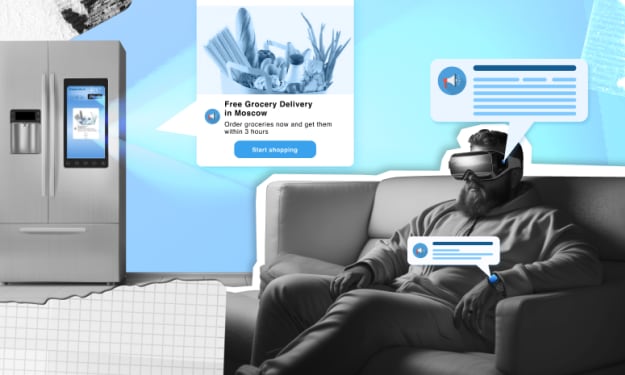Choosing The Right Technology Stack For your Online Food Delivery App
We welcome you to our blog, where we take you on an exciting journey to select the perfect technology stack for your food-ordering app development.

In a world of convenience, a robust technology stack is the key to creating a great user experience. Every aspect of the system must work together to satisfy restaurant partners and customers.
But fear not, dear reader! You can rely on us to help you navigate the maze of options. We will explore critical considerations and compare popular frameworks. We will also dissect frontend and backend options and sprinkle expert advice.
Grab your apron and sharpen your appetite as we embark on a culinary journey to create the perfect technology stack for an online food delivery application!
What is Online Food Delivery?
Online food delivery apps are mobile or web-based platforms that allow users to order from different restaurants and deliver them right to their door.
These apps are becoming increasingly popular in recent years because they provide convenience to customers who want to order food at home or from their office.
Apps for online food delivery usually have an intuitive interface, allowing users to browse menus, choose dishes, personalize their orders, and pay online. Many different cuisines and restaurants cater to all tastes.
Choosing the Right Technology Stack for Your Online Food Delivery App
Online food delivery apps are becoming increasingly popular in the digital age. They offer users the convenience of ordering and delivering their favorite food right to their door. Selecting the right technology stack is crucial if you plan to create an online food delivery application.
A technology stack is a collection of programming languages, frameworks, libraries, and tools used to create a mobile application. This article will explore the main considerations for choosing a technology platform for your online food delivery app.
1. Mobile App Development
Choosing the right platform when developing an online food delivery app is important, as most people access them via mobile devices. iOS and Android are the two main platforms.
You can develop native apps, which are separate apps for each platform, using programming languages specific to the platform, such as Swift for iOS or Java/Kotlin on Android, or cross-platform using frameworks like React Native and Flutter. You can save time and effort by using cross-platform development.
2. Backend Development
Backend technology stacks are important for your food delivery app. They handle tasks like order management, payment processing and data storage. Consider these key factors when building the backend tech stack.
- Programming Language:
Python, Ruby and Java are popular languages for backend development. When selecting a programming language, consider food delivery app development company familiarity and community support.
- Frameworks:
Frameworks offer a structured development approach and pre-built libraries and components. Django and Ruby on Rails are two popular frameworks that offer rapid development.
- Database:
You'll need to use a reliable database to store and manage your app's data. Relational databases such as MySQL and PostgreSQL or NoSQL database systems like MongoDB are popular for large amounts of unstructured information.
- Server:
This server hosts your backend code and serves requests from clients. Popular choices include Apache, Nginx and Microsoft IIS.
3. API and Integration
You'll need robust APIs to integrate seamlessly with services such as payment gateways or restaurant menus. Consider these factors:
4. Payment Gateway Integration
Integrating a reliable and secure payment gateway into your online food delivery application is essential, as it involves financial transactions.
Payment gateways such as Stripe, PayPal, and Braintree are commonly used. Ensure that your payment gateway supports your target audience's preferred payment method and meets relevant security standards such as PCI-DSS.
5. Real-time Tracking and Notifications
Real-time tracking of orders and push notifications are essential to improving the user's experience. WebSockets, Firebase Cloud Messaging and other technologies enable real-time notifications and updates to inform customers of their order status.
6. Cloud Infrastructure
Cloud infrastructure providers offer scalability and reliability as well as cost-efficiency. Amazon Web Services, Microsoft Azure and Google Cloud Platform are popular options. Cloud providers can provide virtual machines, databases, and storage to help you meet your needs for an online food delivery service.
7. UI/UX Design
Creating a visually appealing and intuitive user interface is important to engage users and drive app adoption. You can use popular frameworks like React, Angular or Vue.js to create UI/UX designs and CSS preprocessors like Sass or Less to style.
How to Build An Online Food Delivery App?
Build Food Delivery App involves several steps and considerations. Here's a high-level overview of the process:
1. Define your Requirements:
Clearly define the purpose, target audience, and features of your online food delivery app. Identify key functionalities such as user registration, menu browsing, ordering, payment processing, order tracking, and delivery management.
2. Market Research:
●Do market research to better understand your audience, competitors, and possible opportunities.
●Analyze other food delivery apps and identify their strengths and weakness.
●Find ways to differentiate your application.
3. Select a Platform:
Decide if you want to create a native (iOS or Android) app, a web-based or cross-platform app. Each option comes with its advantages and considerations. You can build apps simultaneously for multiple platforms using cross-platform frameworks such as React Native and Flutter.
4. Design the user Interface and Experience (UX):
Create wireframes and prototyping to visualize the app's layout, navigation, and overall design. Focus on user-friendly and intuitive interfaces to create a smooth experience for the user.
5. Backend Development:
Create the components on the server that will power your application, such as a database for storing user information, menus and orders. Select a programming language and framework suitable for your backend, such as Node.js or Ruby on Rails.
6. Frontend Development:
Create the user interfaces and interaction of your app. Create responsive designs using HTML, CSS, and JavaScript.
7. Integrate with a Payment Gateway:
Use a secure gateway to process online transactions. Stripe, PayPal and Braintree are popular options. To protect user data, ensure compliance with security standards and regulations.
8. Menu Management:
Create a system that allows restaurants to manage menus. This includes adding, updating and deleting items. Implement features such as categories, descriptions and prices for each item.
9. Order Management:
Develop a system for managing customer orders. This includes order placement, real-time notifications, status updates and delivery tracking. Integrate with third-party APIs like Google Maps for accurate tracking of location.
10. Implement user Ratings and Feedback:
Allow users to rate and provide feedback for delivery drivers and restaurants. This feature improves the overall user experience and allows other users to make informed decisions.
11. Testing and Quality Assurance:
Conduct rigorous testing to find and fix bugs. Ensure the app runs smoothly on different platforms and devices. Validate its overall performance. Automated testing tools are used to perform real-world scenarios.
12. Launch and Deployment:
You can publish your app in the respective app stores (Apple App Store, Google Play Store) or deploy it via a web application. To ensure a successful launch, follow the guidelines and requirements for each platform.
13. Continuous Improvement:
Gather user feedback and analytic data to identify improvement areas. Update and improve your app regularly based on market trends and user feedback.
Takeaway!
In conclusion, choosing the right technology stack to power your online food delivery application requires careful consideration of several factors.
You must choose a mobile app platform, backend technologies, APIs and integration approaches, payment gateways, real-time notification and tracking technologies, cloud infrastructure and UI/UX frameworks aligned with your app's requirements, its target audience and your development team's expertise.
Making informed decisions will help you build a successful food delivery app with a great user experience. Get in touch with the best food delivery app development services if you want to build amazing food delivery app.
About the Creator
Anurag Jain
Anurag Jain is the Senior SEO Analyst at Dev Technosy, a global ranking custom software development company.
website: https://devtechnosys.com/






Comments
There are no comments for this story
Be the first to respond and start the conversation.